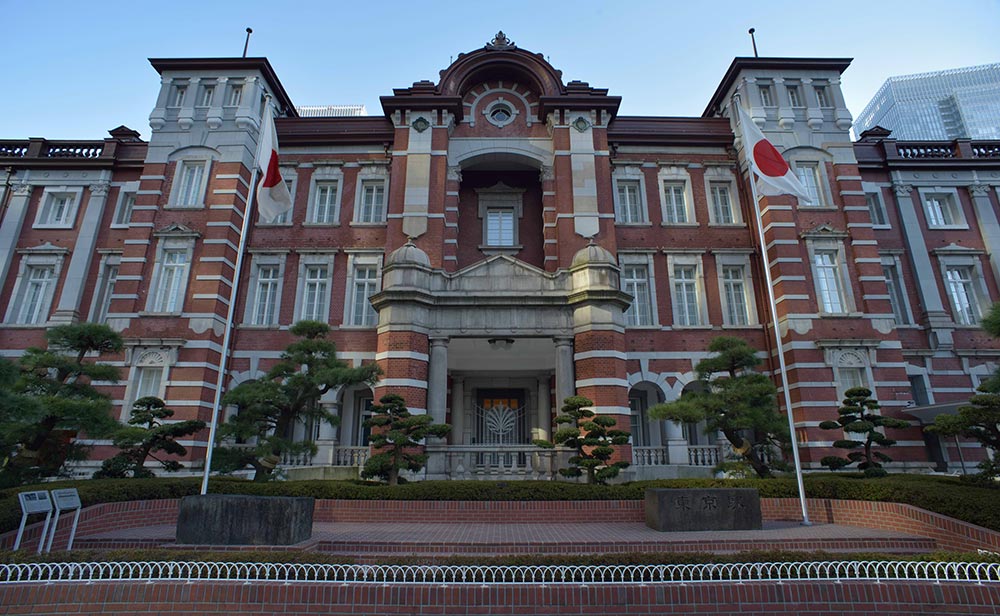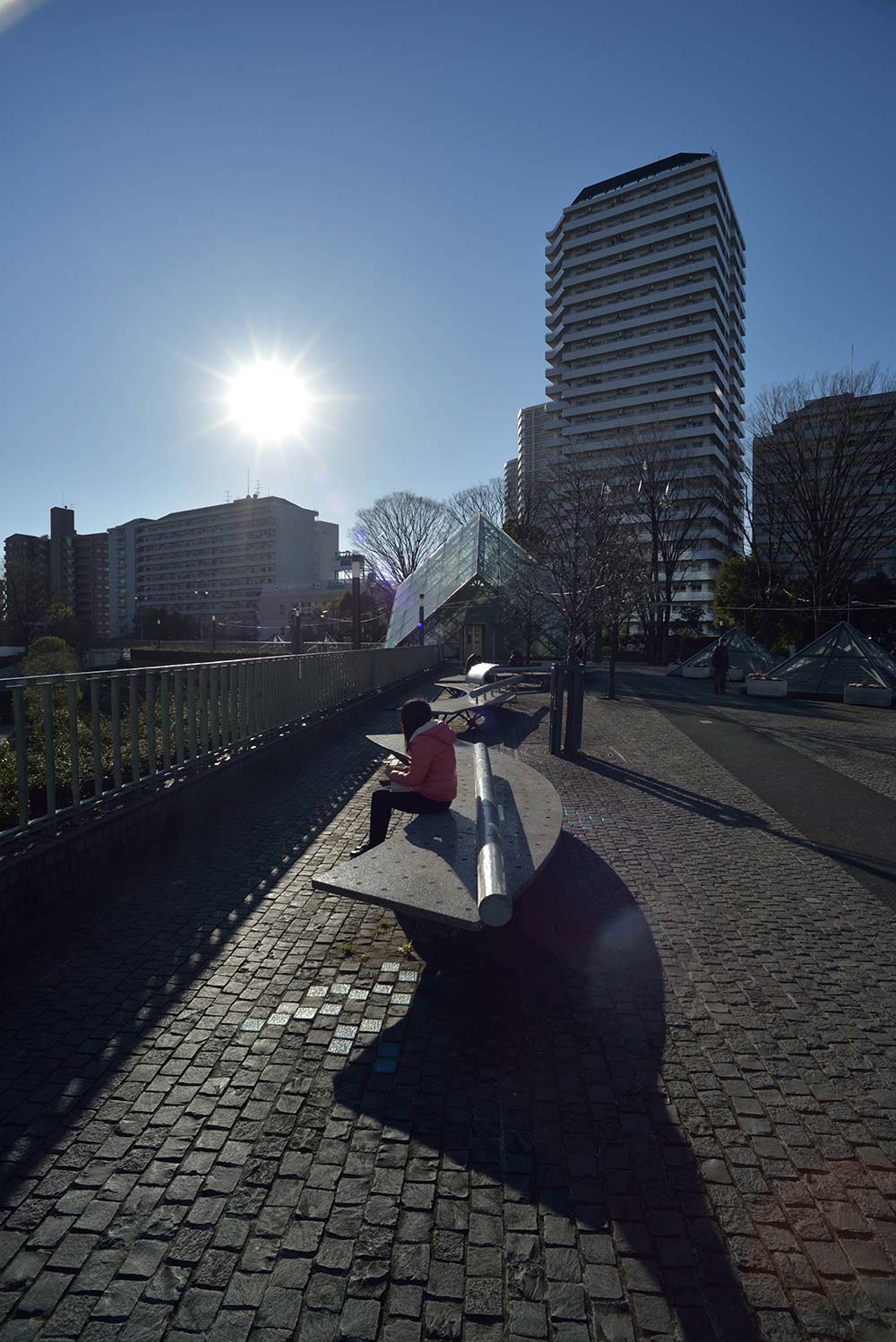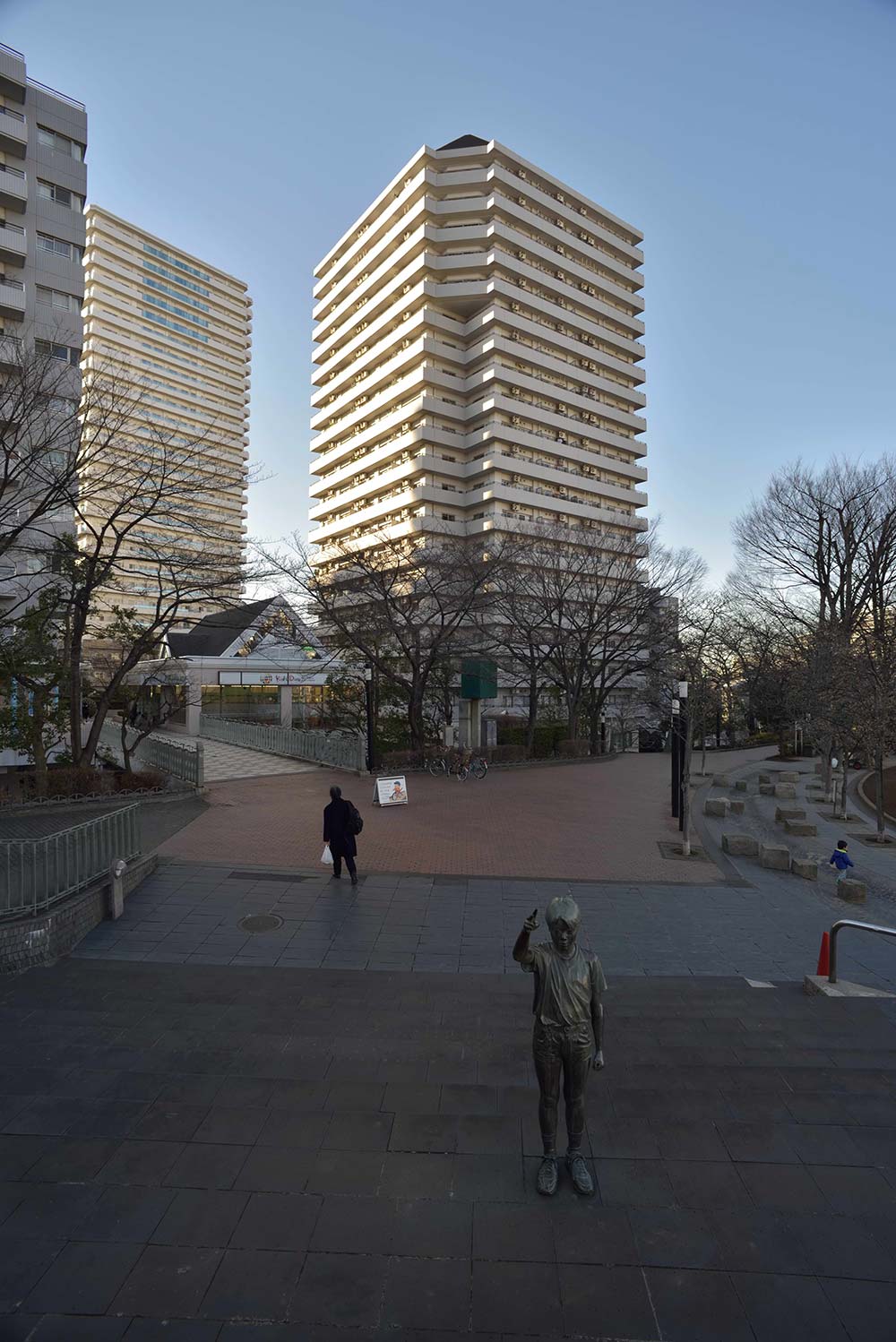NIKKOR - The Thousand and One Nights No.55

AI Nikkor 18mm f/4
Tale 55 takes up the compact ultra wide-angle AI Nikkor 18mm f/4 lens. In this golden age of digital cameras, it is said that this lens has disappeared. Production volume for this lens was not extremely low, so why has it disappeared from camera shops? With this tale, we will delve into the secrets of this compact ultra wide-angle lens.
by Haruo Sato
I. Nikkor 18mm f/4 transformations
First, let's look at the various transformations the Nikkor 18mm f/4 underwent. The Nikkor 18mm f/4 was released in February, 1975. From its beginnings, it was a New Nikkor lens with a new external design and adoption of multi-layer coating. This compact ultra wide-angle lens was quite popular due to its small size and superior performance.
In June 1977, a modified version of the lens that supported automatic maximum aperture indexing was released as the AI Nikkor 18mm f/4. Then, in 1982, the lens was completely redesigned and released as the new generation AI Nikkor 18mm f/3.5. The Nikkor 18mm f/4 was sold for approximately 13 years. This makes it a relatively long seller.
II. Development history and the designer
Nikkor 18mm f/4 optics were designed by Ikuo Mori of 1st Optical Section, Optical Designing Department as it was then known. Mr. Mori, whose name often comes up, was the right hand of Mr. Wakimoto introduced in Tale 1. Mr. Mori designed a wide variety of lenses, including ultra wide-angle, PC, and Bronica Nikkor lenses for Nikon F cameras, as well as Nikkor lenses for large-format cameras and EL-Nikkor lenses for enlargers. Though Mr. Mori has passed, his distinguished work has been handed down through the generations at Nikon.
Though Japan's great lens designers are not generally known, we can trace their work through reports, development histories, notes, and patents. As I have previously written, Mr. Mori had designed ultra wide-angle lenses with a variety of specifications, including focal lengths of 13mm, 15mm, and 18mm and maximum apertures of f/3.5 to f/8, in parallel since prior to 1970.
Designing one ultra wide-angle lens is difficult enough. To design multiple ultra wide-angle lenses at once is superhuman. Reports from that time show the original type of lens for each. After repeated trial production, lenses to be released were determined in the order of 15mm f/5.6, 18mm f/4, and 13mm f/5.6. The Nikkor 18mm f/4 was the middle child in this family of lenses.
Let's take a look at the history of Nikkor 18mm f/4 development. Design of the lens was completed in 1970, and plans for trial production were drawn up in February of that year. Trial production was initiated again in November, 1971 after coatings were improved, mass-production began in December, 1973, and the lens was released on the market in February, 1975.
III. Lens construction and characteristics

Please forgive me if the following is quite technical. First, take a look at the cross-section of the Nikkor 18mm f/4 (Figure 1). You will likely be surprised by the tremendous size of the front lens doublet. The most unique aspect of the construction of this lens is the fact that the first lens element is a positive doublet. I'll explain this in detail later. Nikkor 18mm f/4 construction is relatively simple for an ultra wide-angle lens. It has the same basic retrofocus construction used for common wide-angle lenses. In addition, the lens is afocal (focal length is at infinity) closer to the object side than the aperture.
If we consider this afocal portion as a single lens group, we can think that this lens is comprised of an afocal wide-angle converter with a loosely positive (or loosely negative) and positive structure and a master lens, while also being a retrofocus lens with a negative-positive structure. From the doublet just before the aperture back is the master lens developed from a triplet Tessar type. I think it is easier to understand if we think of the portion in front as an afocal wide-angle converter that reduces the image.
Next, where do Nikkor 18mm f/4 aberration characteristics lie? Common ultra wide-angle lenses are especially prone to distortion and lateral chromatic aberration, and it is usually difficult to compensate for changes to closer distances. However, while the Nikkor 18mm f/4 certainly exhibits a little more distortion with characteristics of both pincushion and barrel distortion, it also exhibits little lateral chromatic aberration, except at the extreme edges. This characteristic is the due to the effects of the first lens element, which I will cover later. In addition, changes in astigmatism and curvature of field are reduced to a relatively good degree despite the fact that the lens uses a focusing system with no structure that compensates for close distances and with which the entire lens extends. The very small amount of sagittal coma flare should also be noted. While due in part to the maximum aperture of f/4, with the exception of the extreme edges of the frame, extremely good compensation is performed. This means that users can make the most of the strengths of the lens, even with capture of evening and night landscapes.
IV. Actual performance and sample images
Next let's look at results achieved with actual images. Details regarding performance at various aperture settings are noted. Evaluations are subjective, and based on individual preferences. Please keep in mind that my opinions are for reference purposes when viewing sample images and reading the evaluations.
f/4 (maximum aperture)
While resolution is relatively good at the center of the frame, flare increases gradually and sharpness drops as image height increases. However, image quality is sufficiently maintained for practical use in most circumstances. Naturally, resolution is insufficient at the extreme edges of the frame. There is also some peripheral illumination falloff, but I think colors are good with little bleed.
f/5.6
Stopping down the aperture to f/5.6 increases sharpness, especially near the center of the frame. While there is little change in resolution throughout most of the frame, flare is reduced for a sharper image. There is also less peripheral illumination falloff.
f/8 to f/11
Flare is eliminated for significantly greater resolution at the edges of the frame. A satisfactory level of sharpness is achieved throughout nearly the entire frame. Image quality drops only at the extreme edges of the frame. The f/11 to f/16 range of aperture settings seems best for regular use.
f/16 to f/22
Consistent rendering is achieved throughout the entire frame. The most consistently good image quality is achieved at f/16. The effects of a slight amount of diffraction begin to appear a little, but are within an acceptable range. At f/22, the effects of diffraction are visible and resolution drops slightly.
If sharpness is the goal, the best results would likely be achieved at an aperture setting of f/11 to f/16. In addition, I get the sense that artistic photographs, with which the user dares to utilize peripheral illumination falloff, are possible even at the maximum aperture of f/4.
Let's confirm these rendering characteristics with sample photos.

Nikon D750/AI Nikkor 18mm f/4
Aperture: f/11
Shutter speed: 1/400 s
Sensitivity: ISO 400
Image quality mode: RAW
White balance: Auto
D-Lighting: Auto
Picture Control: Neutral
Date of capture: January 2015

Nikon D750/AI Nikkor 18mm f/4
Aperture: f/11
Shutter speed: 1/80 s
Sensitivity: ISO 400
Image quality mode: RAW
White balance: Auto
D-Lighting: Auto
Picture Control: Neutral
Date of capture: January 2015
So that you may judge the characteristics of this lens for yourself, compensation for lateral chromatic aberration and vignetting has not been applied.
Sample 1 is a snapshot of a backlit city street. I think you'll see that it exhibits sufficient sharpness to the edges of the frame, and that color reproduction is also good. In addition, the effects of lateral chromatic aberration are also good for pleasing results. Sample 2 is a photo of the main entrance to Tokyo Station. With this image, I tested the consistency of sharpness and the effects of distortion. It also proves that the lens offers consistently sufficient sharpness all the way to frame peripheries. While distortion with characteristics of both pincushion and barrel distortion is visible in straight lines, it is clear that this lens offers superior performance as an ultra wide-angle lens.

Nikon D750/AI Nikkor 18mm f/4
Aperture: f/4
Shutter speed: 1/50 s
Sensitivity: ISO 1000
Image quality mode: RAW
White balance: Auto
D-Lighting: Auto
Picture Control: Flat
Date of capture: April 2014

Nikon D750/AI Nikkor 18mm f/4
Aperture: f/11
Shutter speed: 1/1600 s
Sensitivity: ISO 400
Image quality mode: RAW
White balance: Auto
D-Lighting: Auto
Picture Control: Standard
Date of capture: January 13, 2015
Sample 3 was taken inside Tokyo Station. Note that as this image was captured at a high sensitivity setting, a little noise was generated. You can see how well sharpness is preserved with capture at the maximum aperture of f/4. Peripheral illumination falloff is slightly noticeable.
With Sample 4, I tested ghost and flare characteristics. The scene was fully backlit with the sun included in the frame. Normally, these are conditions in which ghost and flare are most common. The results, however, made this an incredible ultra wide-angle lens for its time. I believe that with a little care, this lens offers performance that makes it suitable for use even today.

Nikon D750/AI Nikkor 18mm f/4
Aperture: f/11
Shutter speed: 1/200 s
Sensitivity: ISO 400
Image quality mode: RAW
White balance: Shade
D-Lighting: Auto
Picture Control: Flat
Date of capture: January 2015

Nikon D750/AI Nikkor 18mm f/4
Aperture: f/11
Shutter speed: 1/400 s
Sensitivity: ISO 400
Image quality mode: RAW
White balance: Auto
D-Lighting: Auto
Picture Control: Flat
Date of capture: January 2015
Samples 5 and 6 were captured to confirm characteristics such as sharpness and reduced contrast with partially backlit shooting. I think you'll see that the lens exhibits sufficient sharpness to the edges of the frame, and that color reproduction is also good.
Overall, it turns out that this relatively slow lens forms sharp images that stand up to practical use even at maximum aperture. I'm sure you've seen that it is a lens with which stopping down the aperture greatly increases sharpness. In addition, though it does exhibit distortion with characteristics of both pincushion and barrel distortion, the degree of this distortion falls within acceptable ranges. While this lens does exhibit less ghost than other ultra wide-angle lenses in its class, some is slightly noticeable. To some degree, the occurrence of ghost is a major drawback to ultra wide-angle lenses. However, when the light source is not included in the frame, ghost can be eliminated relatively easily by controlling composition or blocking bright light.
V. The secret of the front lens element

As I warned you I would, I'd now like to consider the front lens element of a wide-angle lens. Please forgive me if the following gets a little technical again.
There are generally two types of front lens elements (front group) used for wide-angle lenses. Take a look at Figure 2. One is known as positive lead type, with which optics begin with a convex lens (positive lens element). The other is known as negative lead type, with which optics begin with a concave lens (negative lens element). Those knowledgeable about lenses will likely recognize these types. All wide-angle lenses, from fixed focal length wide-angle lenses to wide-angle and normal zoom lenses, can be generally categorized as one of these two types.
You probably feel that the use of the two types for wide-angle lenses is rather random. However, it is interesting to note that the appearance of the front lens element (front group) changes completely when the angle of view exceeds 2ω=100°. All manufacturers' ultra wide-angle lenses use the negative lead type, and the positive lead type has nearly completely disappeared. Why is this? The secret is explained in detail on page 119 of a book on lens design engineering by Jihei Nakagawa, published by Tokai University Press. The secret can be understood by observing the behavior of light refraction with the two types of structures illustrated in Figure 2.
With a positive lead type, the convex lens that forms the first lens element refracts light more as the angle of view increases. This refracted light passes through the concave lens behind the first lens element at a high angle of incidence. You can see how that concave lens also refracts light greatly. With a negative lead type, however, there is less refraction by the first concave lens element, and the angle of incidence of light is lower. As for light passing through the subsequent convex lens element, there is less refraction, as if the angle of view were reduced. In short, the positive lead type exhibits a greater angle of refraction by all lens elements than does the negative lead type, even at the same angles of view. This results in more aberration, especially that of high order. When the angle of view is around 2ω=90°, there is little difference. However, the differences become quite remarkable when 100° is exceeded, resulting in distortion exhibiting characteristics of both pincushion and barrel distortion, which is difficult to correct. Furthermore, it also becomes more difficult to compensate for lateral chromatic aberration. Therefore, almost all wide-angle lenses for the 35mm [135] format with a focal length shorter than 19mm use the negative lead type.
However, the creations of great designers go beyond practical wisdom. This is also interesting and thought-provoking. The Nikkor 18mm f/4 that Mr. Mori designed utilized a doublet comprised of one concave element and one convex element for the first lens element, and was a positive lead type that began with a positive lens element. What's more, as previously noted, distortion tends to exhibit the characteristics of both pincushion and barrel distortion, but is well compensated considering the angle of view. In addition, utilization of a doublet for the first lens element achieved good results in terms of lateral chromatic aberration. This is a good example that what we think of as common sense is not always the case and it is sometimes even irrational when viewed from a different perspective. It shows how the work of a genius goes beyond common sense. By the way, Jihei Nakagawa, who wrote the book on lens design engineering that I referred to earlier, was an extremely distinguished lens designer. In fact, the 18mm f/3.5 lens that he designed was actually a positive lead type lens. The book likely reflects the struggles he faced in designing that lens.
VI. Has it disappeared?
A friend previously told me that the Nikkor 18mm f/4 had disappeared from the market. Though the current situation is unclear, it does seem that it was in short supply for a time. I began writing Tale 55 to explore the secrets of the Nikkor 18mm f/4. I frequently used the Nikkor 18mm f/4 in the age of film cameras. Though I primarily took black-and-white photos, I thought I had a good understanding of its performance. The lens was an old friend, but using it with a digital camera was a completely new experience. I feel like the test shots I took reminded me of why this lens had been so popular.
It is because it offers a level of performance sufficient for use even with high pixel-count digital cameras, and because its compact size makes it very convenient and easy to use. Point formation (detail and sharpness) and color reproduction are also good. Users can expect even better photos with processing performed by Vignette Control and Lateral Chromatic Aberration Compensation functions. As Nikon digital cameras use the same mount as conventional Nikon film cameras, users can make the most of older equipment. I hope that everyone will find their own favorite lens.

NIKKOR - The Thousand and One Nights
The history of Nikon cameras is also that of NIKKOR lenses. This serial story features fascinating tales of lens design and manufacture.

